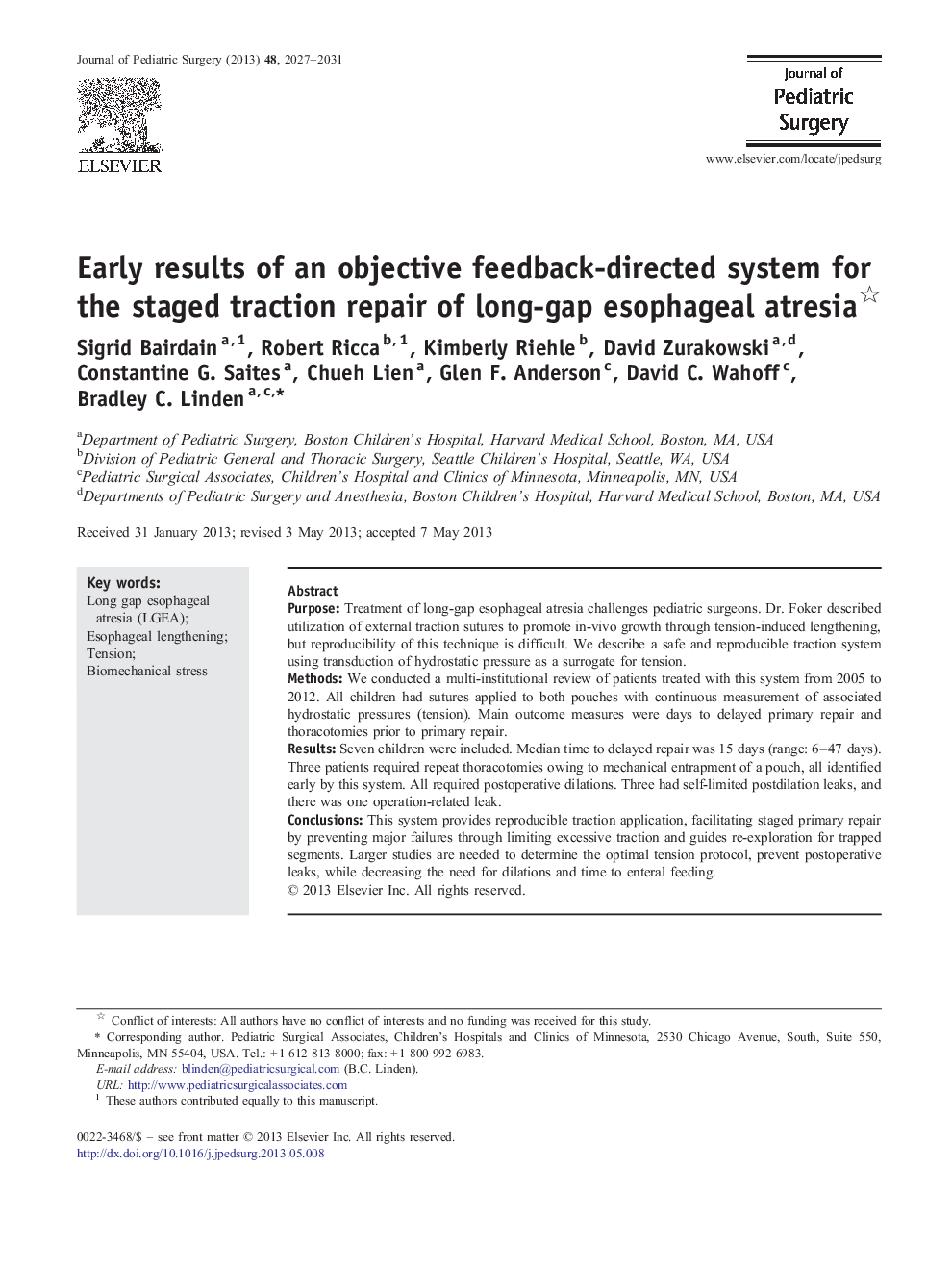| Article ID | Journal | Published Year | Pages | File Type |
|---|---|---|---|---|
| 6217174 | Journal of Pediatric Surgery | 2013 | 5 Pages |
PurposeTreatment of long-gap esophageal atresia challenges pediatric surgeons. Dr. Foker described utilization of external traction sutures to promote in-vivo growth through tension-induced lengthening, but reproducibility of this technique is difficult. We describe a safe and reproducible traction system using transduction of hydrostatic pressure as a surrogate for tension.MethodsWe conducted a multi-institutional review of patients treated with this system from 2005 to 2012. All children had sutures applied to both pouches with continuous measurement of associated hydrostatic pressures (tension). Main outcome measures were days to delayed primary repair and thoracotomies prior to primary repair.ResultsSeven children were included. Median time to delayed repair was 15Â days (range: 6-47Â days). Three patients required repeat thoracotomies owing to mechanical entrapment of a pouch, all identified early by this system. All required postoperative dilations. Three had self-limited postdilation leaks, and there was one operation-related leak.ConclusionsThis system provides reproducible traction application, facilitating staged primary repair by preventing major failures through limiting excessive traction and guides re-exploration for trapped segments. Larger studies are needed to determine the optimal tension protocol, prevent postoperative leaks, while decreasing the need for dilations and time to enteral feeding.
